- Home
- H A CULLEY
Seeking Jerusalem
Seeking Jerusalem Read online
SEEKING JERUSALEM
By
H A Culley
Book Four of the Normans Series
Published by Orchard House Publishing
First Kindle Edition 2013
Text copyright © 2013 H A Culley
The author asserts the moral right under the Copyright, Designs and Patents Act 1988 to be identified as the author of this work.
All Rights Reserved. This book may not be reproduced in any form, in whole or in part, without written permission from the author.
Cover design by Pete Zelewski. © Pete Zelewski
For Carrie
Acknowledgements
I am most grateful to Julian Smythe for helping to proof read the draft and for his helpful advice. As ever, I am also indebted to my son James and my wife Carrie for their help and support.
TABLE OF CONTENTS
Historical Note
List of Principal Characters
Prologue – The Fall of Jerusalem – 1187 AD
Chapter One – Messina – October 1190
Chapter Two – The Conquest of Cyprus - April 1191
Chapter Three – Silver Chains for an Emperor– May 1191
Chapter Four – Barbarossa – June 1190
Chapter Five – The Siege of Acre – June 1191
Chapter Six – The Battle of Arsuf – 7th September 1191
Chapter Seven – Trouble at Home - England - 1191
Chapter Eight – The Road to Jerusalem - Autumn 1191 to Spring 1192
Chapter Nine – England – 1192
Chapter Ten – A Difference of Opinion – Spring 1192
Chapter Eleven – The Advance on Jerusalem – Summer 1192
Chapter Twelve – The Fight for Peace – Summer and Autumn 1192
Chapter Thirteen – The Road to Captivity – Autumn 1192
Chapter Fourteen – England – 1193
Epilogue – 12th May 1219
Historical Note
The Third Crusade is probably the most famous of all the crusades. During the First Crusade (1096–1099) Roman Catholic Europe regained the Holy Land, which had been part of the Christian Byzantine Empire until conquest by the Muslims during the period 632 and 661 AD. The First Crusade ultimately resulted in the recapture of Jerusalem in 1099 and the freeing of the Eastern Christians from Islamic rule.
The original purpose of the First Crusade had been to aid the Byzantine Emperor Alexios I Komnenos, who had asked western volunteers to come to help him repel the invading Seljuq Turks from Anatolia. However, instead of returning the Holy Land to the Byzantines, the crusaders established their own states, namely the Kingdom of Jerusalem, the County of Tripoli, the Principality of Antioch and the County of Edessa.
Edessa had been the first to be conquered by the crusaders and it was the first to be re-captured by the Seljuq Turks. The Second Crusade was launched in 1145 to recover it but the venture was a dismal failure. The only success was the capture of Lisbon from the Moors by a combined force of Portuguese, English, Scottish, Flemish and German crusaders en route to the Levant. However, the remaining Crusader states held firm against a divided Muslim opposition.
Yusuf ibn Ayyub, later known as Salah ad Din, the servant of God - anglicised to Saladin - had been born a Kurd in Tikrit in Mesopotamia. Saladin's military career began under the tutelage of his uncle Asad al-Din Shirkuh, an important military commander under Nur ad-Din, the Sultan of Syria. Following his success against the combined forces of the Crusader states and their ally, the Sultan of Egypt, Saladin become in turn Governor of Alexandria, Vizier of Egypt, an emir and finally Sultan of Egypt in 1169 at the age of thirty one. After putting down a succession of revolts he defeated a combined Crusader and Byzantine army at Damietta and then started a campaign to capture various Crusader strongholds.
When Nur ad Din of Syria died in 1174 he was succeeded by his eleven year old son, As-Salih Ismail al-Malik. Saladin took advantage of the consequent struggle for power within Syria and seized Damascus, claiming it on behalf of the boy sultan. He was appointed as regent and was then recognised as Sultan of Syria when As Salih died aged eighteen in 1181. Saladin was forty three years old and had risen from relative obscurity to be ruler of both Egypt and Syria. He was now in a position to challenge the Crusader states.
The Kingdom of Jerusalem was the most important of these. In 1187, when Saladin began his campaign of conquest, the crusaders were far from united. Ever since the death from leprosy of Baldwin IV of Jerusalem they had lacked an undisputed leader. Baldwin had left the kingdom to his eight year-old nephew, Baldwin V, but the boy quickly followed him to the grave. Three claimants to the crown then emerged – Conrad, Marquis of Montferrat, who was the younger Baldwin’s uncle and his nearest male relative, and the two sisters of Baldwin IV – Isabella and Sybilla. Isabella was supported by Raymond, Count of Tripoli and her stepfather, Balian of Ibelin, whilst Sybilla was supported by her husband, Guy de Lusingnan, and Reynard de Chatillon, Prince of Antioch.
Sybilla became queen in 1186 with Guy as her king consort. The result was disastrous for the Crusader States. King Guy and Reynard de Chatillon led the combined western armies to annihilation at the battle of Hattin in 1187 and the city of Jerusalem fell to Saladin three months later.
When the news reached Rome the Pope – Gregory VIII – issued the Bull Audita Tremendi, launching the Third Crusade. This was to be led by the Holy Roman Emperor, Frederick Barbarossa, and the Kings of England and France. Barbarossa’s army reportedly numbered 100,000 and, had he made it to the Holy Land, the combined Crusader armies would have probably overwhelmed those of Saladin. As it was, the emperor died through his own stupidity. He decided to approach the Holy Land through Turkey and, seeing that the bridge over the River Seleph in Cilicia was crowded with his troops, he impatiently urged his horse into the river to swim across. Both Frederick Barbarossa, wearing his chainmail armour, and his horse were swept away by the deceptively strong current and drowned. Of the 100,000 he had set out with, only 5,000 under the command of Duke Leopold of Austria made it to link up with the English and French forces.
If the aim of the crusade was to re-establish sovereignty over the Holy Land, it failed. However, it did result in a compromise whereby the former kingdom of Jerusalem was saved as a ten mile wide strip along the coast and Christian pilgrims were allowed free access to places such as Jerusalem, Nazareth and Bethlehem.
Richard of England backed the claim of Guy of Lusignan to the kingdom of Jerusalem whilst Philip of France and Duke Leopold backed the claim of Conrad of Montferrat. Eventually both Philip and Leopold deserted Richard and returned home. The treaty which kept the much reduced Kingdom of Jerusalem in being and secured safe passage for pilgrims was therefore the achievement of Richard alone.
It is difficult to sift truth from myth as far as Richard’s capture by Leopold and eventual ransom is concerned. The story of Blondin’s search for his king, singing outside every castle window on the continent, doesn’t ring true somehow.
Much has been written about Richard the Lionheart. To some he is the stuff of legend, the very epitome of the chivalrous and valiant warrior and a very much better king than his wicked brother John. To others he was probably one of the worst kings we ever had. He was ruthless and his treatment of Muslim prisoners was barbaric by any standards. He only spent a few months in England during his ten years on the throne and could barely speak a word of English. He bankrupted the country, both to fund the crusade and to pay for his ransom. England suffered through neglect during his reign and many Englishmen blamed him for releasing the Scots so cheaply from the yoke placed on them by his father under the treaty of Falaise. During his reign the persecution of the Jews in England verged on genocide and, if not condoned by the king, h
e did nothing to stop it or bring those responsible to justice. One historian has described him as a bad son, a bad husband, a selfish ruler, and a vicious man.
There is little evidence that Richard was a practicing homosexual and the close relationship he had with Philip of France when they were young men, which turned so sour when they were older, may have more to do with politics than the spite of a spurned lover.
The England that Richard left behind was a poorer place in every sense of the word compared to the land he had inherited.
Forms of address were very different in the early Middle Ages. Your Majesty as a form of address for the king wasn’t used before Henry VIII and much later for the queen. Sire and my liege were used for the king and madam or my lady for the queen. The term prince wasn’t in common use for sons of a sovereign, except for the Prince of Wales. John, as the son of Henry II, would be known as Lord John or, after being given a title, Count John or Earl John. However, as the name by which he is normally known today is Prince John, I have used this name in the book.
There are certain words which might be unfamiliar to the reader. I list a few of these below:
Battaille – Literally a battle. A cavalry formation made up of a number of conrois.
Braies - a type of trousers generally reaching to the knees or mid-calf. They could be made of leather, wool, cotton or linen. Later they became briefer and were worn as undergarments beneath hose.
Caparison - A cloth covering for a war horse. It was divided in two at the saddle and usually covered the horse from neck to rear, reaching down to the fetlock. It usually displayed the knight’s heraldic achievement (often misnamed coat of arms) but not always. Later caparisons would cover the horse’s head as well.
Chausses - chain mail leggings covering the legs which were exposed below the hauberk.
Conroi - a troop of cavalry between twenty and thirty strong; usually knights but also applied to mounted serjeants.
Constable - person in charge of a castle in the absence of its lord. In particular, he was responsible for its defence.
Courser - the courser was more common as a war horse than the destrier and preferred by some as they were lighter and faster whilst still being quite strong. They were valuable horses, but less expensive than the highly-prized destrier.
Destrier - the finest and strongest type of warhorse. These horses were usually stallions, bred and raised from a foal specifically for use in war. They were comparatively expensive.
Gambeson - a heavily quilted coat worn under the outer defence of chain mail to prevent it from chafing, or else worn on its own where it gave some protection from cuts and arrows.
Graf – A German noble equivalent to a French count of an English earl.
Jennet - a smooth-gaited type of horse known for its presence, style and smooth ride.
Knight’s Fee - an estate or manor held by a tenant in exchange for which he provides one knight to serve his lord for (normally) forty days per year and served under him in time of war.
Mesnie - the knights forming the regular military component of a noble’s household.
Outremer - The term for the Near East in the Middle Ages.
Palfrey - the most expensive and highly-bred type of riding horse – as opposed to war horse - during the Middle Ages, sometimes equalling the knight's destrier in price. Consequently it was popular with nobles, ladies and highly-ranking knights for riding, hunting and ceremonial use.
Picquet – a group of sentries placed outside the perimeter of a camp or other position to give early warning of attack.
Rouncey - an ordinary, all-purpose horse. They were used for riding, but could also be trained for war. It was not unknown for them to be used as pack horses.
Routiers - mercenary soldiers organised into bands or routes. They were for hire but also plundered the countryside on their own account.
Scutage - the payment under the feudal system which allowed a knight to "buy out" of the military service due to his overlord in return for his tenure of land known as a “knight’s fee”.
Serjeant - a professional soldier who ranked between a knight and a man-at-arms. Most were mounted though the term was also used for an armoured spearman on foot.
Shatranj - a board game similar to modern chess which reached Western Europe from the East in the 9th Century.
Sheriff (England) - a senior royal official responsible for keeping the peace throughout a shire or county and to collect taxes on behalf of the king.
Sheriff (Scotland) - a senior royal official charged with keeping law and order in a shire who also acted as a judge.
Turcopole - locally recruited mounted archers employed by the crusader states; usually Christians of Turkish origin.
List of Principal Characters
In order of appearance
Historical characters are shown in bold type
GERARD DE RIDEFORT Grand Master of the Knights Templar
RAYMOND OF TRIPOLI Count of Tripoli and Lord of Tiberias
RAYNARD DE CHATILLON Prince of Antioch
SALADIN Salah ad Din Yusuf ibn Ayyub. Sultan of Egypt and Syria
GUY DE LUSIGNAN King of Jerusalem
BALIAN OF IBELIN Baron of Ibelin in the county of Jaffa, younger brother of Baldwin of Ramla
CONRAD, MARQUIS OF MONTFERRAT Lord of Tyre, later elected as King of Jerusalem
RICHARD DE CUILLE Baron of the Cheviot in Northumberland
TRISTAN CUILLE Richard’s nephew and squire. Eldest son of Edward de Cuille.
MILES OF BYRNESS Son of the late Robert of Locksley and constable of Otterburn Castle in Redesdale, part of the barony of the Cheviot
WARIN OF OTTERBURN Miles’s squire
WALDO CUILLE Distant cousin of Richard de Cuille. Killer of Robert of Locksley.
GERVAISE Waldo’s squire.
ALAN FITZWALTER High steward of Scotland.
EDWARD DE CUILLE Governor of Berwick and Baron of Craigmor in Scotland. Richard de Cuille’s younger brother.
BLANCHE Edward’s wife, heiress of Craigmor
DAVID Edward’s second son
RICHARD THE LIONHEART King of England, Duke of Aquitaine and Normandy, Count of Maine and Anjou
PHILIP AUGUSTUS King of France
BERENGARIA Eldest daughter of King Sancho VI of Navarre. Later queen of England.
JOAN King Richard’s sister. Widow of King William II of Sicily.
ELEANOR OF AQUITAINE Dowager queen of England, mother of King Richard
JOHN, COUNT OF MORTAIN King Richard’s younger brother. Later Earl of Gloucester
WILLIAM MARSHAL Earl of Pembroke and Lord of Striguil in Ireland. Co-regent of England during the Third Crusade
HUMPHREY OF TORON Baron of Toron, Kerak, and Oultrejordain. Formerly married to Isabella, later queen of Jerusalem
ISAAC COMNENUS Last Byzantine Emperor of Cyprus
FREDERICK BARBAROSA Holy Roman Emperor, King of Germany and King of Italy
FREDERICK, DUKE OF SWABIA His grandson
LEOPOLD OF BABENBERG Duke of Austria
HENRY HOHENSTAUFEN Succeeded Barbarosa as Holy Roman Emperor
FERHAT YUSEF Kurdish light cavalry officer, nephew of Bashir al Melik
BASHIR AL MELIK Kurdish army commander
SAFADIN Sayf ad Din al Adil. Sultan of Egypt and brother of Saladin
HUGH, DUKE OF BURGUNDY French commander after the departure of Philip Augustus
ISABEL DE CLARE Countess of Pembroke and Striguil, wife of William Marshal
GEOFFREY OF YORK Illegitimate son of King Henry II and half-brother of Richard the Lionheart. Archbishop of York
RICHARD FITZNEAL Bishop of London and Lord Treasurer of England
GILBERT d’UMFRAVILLE Baron of Prudhoe in Northumberland
TURSTIN Constable of Harbottle Castle
EDWIN His illegitimate son and squire
EUSTACE DE VESCI Baron of Alnwick, first cousin of Richard and Edward de Cuille
JOHN BEAUILLY Deputy Sheriff of Derbyshi
re, Constable of Peverel Castle and husband of Margaret de Cuille, Waldo Cuille’s twin sister.
THOMAS d’UMFRAVILLE Lord Gilbert d’Umfraville’s younger brother.
WILLIAM THE LYON King of Scots
THOMAS DE MUSCHAMP Baron of Wooler
HENRY, COUNT OF CHAMPAGNE Nephew of both Philip of France and Richard of England and one of the French commanders on crusade. Later consort of Isabella, queen of Jerusalem
SIMON DE CHALONS Second squire to Count Henry of Champagne, later squire to Sir Tristan Cuille.
WILLIAM DE L’ETANG A knight from Aquitaine and close companion of King Richard.
BALDWIN OF BETHUNE Third son of the Baron of Bethune in Artois, later Count of Aumale.
Prologue – The Fall of Jerusalem – 1187 AD
Gerard de Ridefort, Grand Master of the Knights Templar, and Roger des Moulins, Grand Master of the Knights Hospitaller sat on their destriers looking down at the horde of mounted Saracens watering their horses at the Springs of Cresson, less than two miles from the holy town of Nazareth. Behind them, below the ridge line, sat eighty Templars, ten Hospitallers and forty knights from Nazareth wearing the blue surcoat and five gold crosses of the kingdom of Jerusalem.
‘They have broken the truce and I say we must attack or lose our honour,’ Gerard insisted.
‘They have good cause. It wasn’t Saladin who broke the truce, but Raynard de Chatillon when he attacked the caravan in which Saladin’s sister was travelling,’ Roger countered. He thought it would be the gravest folly for a hundred and thirty knights to attack a force of several thousand light cavalry, however vulnerable they might seem at the moment as they relaxed before crossing back over the River Jordan into their own territory.

 The Wolf and the Raven
The Wolf and the Raven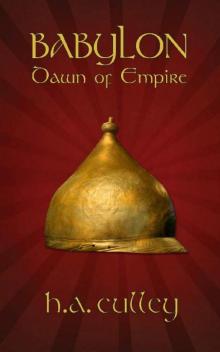 Dawn of Empire
Dawn of Empire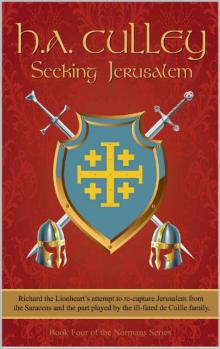 Seeking Jerusalem
Seeking Jerusalem The Strategos
The Strategos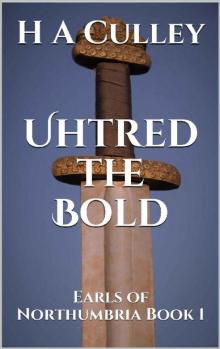 Uhtred the Bold
Uhtred the Bold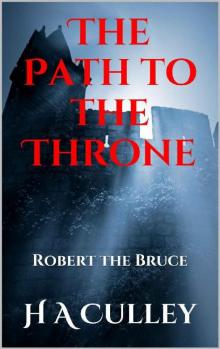 The Path to the Throne
The Path to the Throne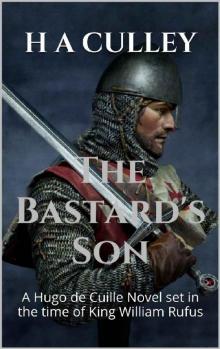 The Bastard's Son
The Bastard's Son Alexander
Alexander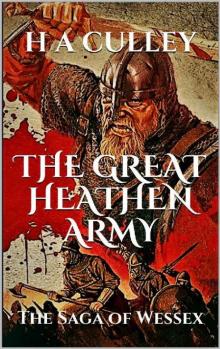 The Great Heathen Army
The Great Heathen Army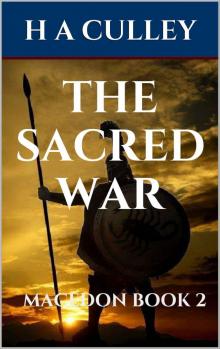 The Sacred War
The Sacred War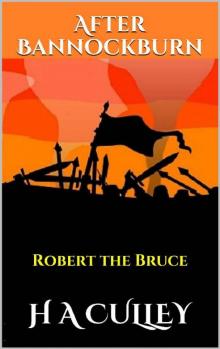 After Bannockburn
After Bannockburn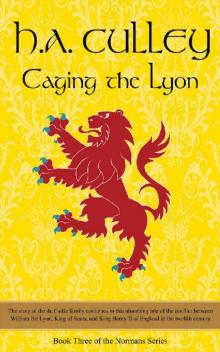 Caging the Lyon
Caging the Lyon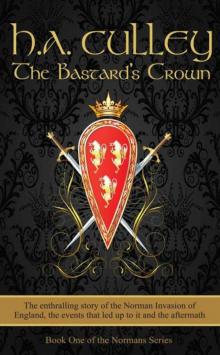 The Bastard's Crown
The Bastard's Crown WHITEBLADE
WHITEBLADE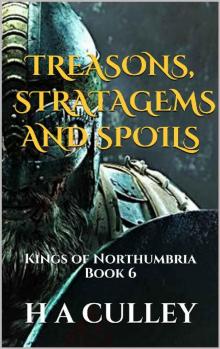 TREASONS, STRATAGEMS AND SPOILS: Kings of Northumbria Book 6
TREASONS, STRATAGEMS AND SPOILS: Kings of Northumbria Book 6 THE POWER AND THE GLORY: Kings of Northumbria Book 4
THE POWER AND THE GLORY: Kings of Northumbria Book 4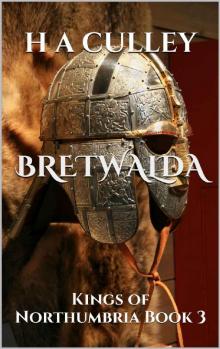 BRETWALDA: Kings of Northumbria Book 3
BRETWALDA: Kings of Northumbria Book 3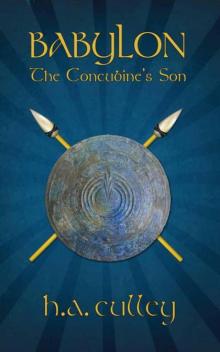 The Concubine's Son
The Concubine's Son The Fall of the House of Æthelfrith: Kings of Northumbria Book 5
The Fall of the House of Æthelfrith: Kings of Northumbria Book 5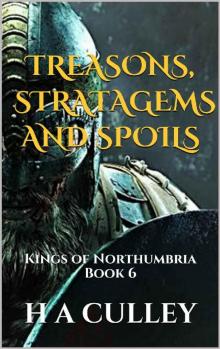 TREASONS, STRATAGEMS AND SPOILS
TREASONS, STRATAGEMS AND SPOILS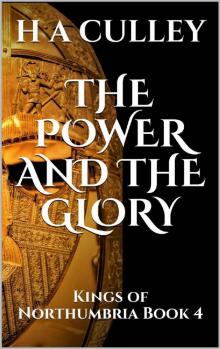 THE POWER AND THE GLORY
THE POWER AND THE GLORY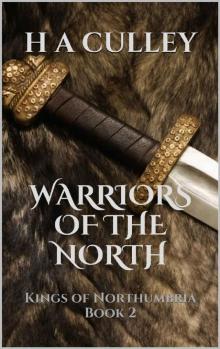 WARRIORS OF THE NORTH
WARRIORS OF THE NORTH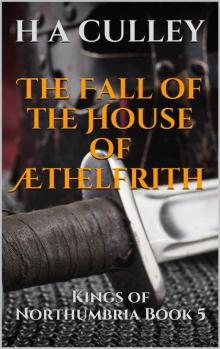 The Fall of the House of Æthelfrith
The Fall of the House of Æthelfrith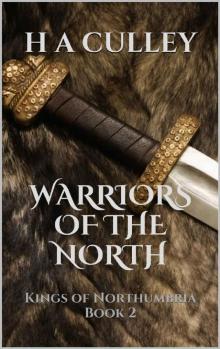 WARRIORS OF THE NORTH: Kings of Northumbria Book 2
WARRIORS OF THE NORTH: Kings of Northumbria Book 2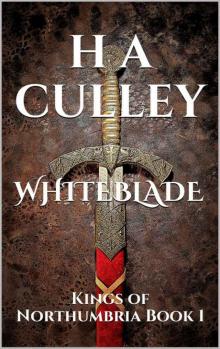 WHITEBLADE: Kings of Northumbria Book 1
WHITEBLADE: Kings of Northumbria Book 1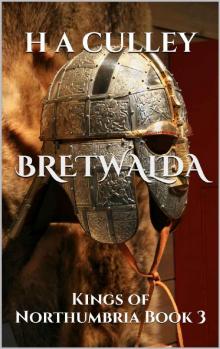 BRETWALDA
BRETWALDA